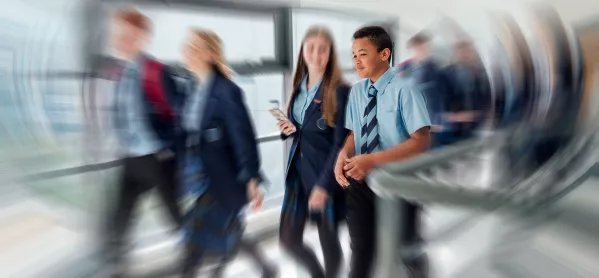Badly run and designed schools create additional needs, hear MSPs

Mainstream Scottish schools are not doing enough for “a big chunk of children” with additional support needs (ASN) that they should be capable of helping - with two major factors being culture and school buildings, MSPs have heard.
Megan Farr, a policy officer for Scotland’s children’s commissioner, told the parliamentary inquiry into additional support for learning that “a large proportion” of the 37 per cent of Scottish pupils identified as having ASN would not need extra help if more schools were designed and run with them in mind.
Many Scottish secondary schools are “very hard, noisy, loud spaces with very bright lighting” and could be “hostile” and “very crowded”, with “lots of children moving around”, she said.
Similarity to prisons
Such schools were not “dissimilar to prisons” in their design, “apart from the lack of bars on the doors”, Ms Farr added.
She said that children with autism spectrum disorders, in particular, could find that “extremely overwhelming” but that schools were still being built in this way.
Meanwhile, children with physical disabilities sometimes had needs because buildings had not been adapted, so they needed “additional support to get around the school”.
Ms Farr added that “school cultures” were also a factor and “the way the school is run” could lead to some children with autism “absolutely joining in with the rest of the class”, while in another school a child with similar needs would be “just not coping”.
- Background: Additional support for learning inquiry launched in Scotland
- Related: Open plan ‘super schools’ deemed bad for pupils with ASN
- News: ‘Explosion’ in ASN numbers sees schools struggling
She concluded: “Thirty-seven per cent of children have an additional support need - and I’m going to separate out the concept of disability from additional support needs.
“They may still have a disability but, actually, if schools met their needs better they no longer have additional support needs because they are getting support automatically.”
Ms Farr was giving evidence yesterday to the Scottish Parliament’s Education, Children and Young People Committee as it continues its inquiry into additional support for learning and the presumption that children with ASN should attend their local school.
‘Massive challenge’ for autistic pupils
The committee heard that secondary school could be a particularly tough environment for children with additional needs.
Marie Harrison, a senior policy officer for My Rights, My Say, which helps children in Scotland with ASN to exercise their rights to involvement in decisions about their support in school, said primary schools could wrap themselves around the child and create “safe, small workspaces for children and young people” - but it was “a massive challenge for autistic young people to make that transition from primary”.
In Scandinavia, pupils do not make that transition until they are 15 or 16, and she suggested there might be “learning to be harnessed there”.
Ms Harrison said the average age of young people contacting My Rights, My Say was 13 and a half: these pupils were “fighting, trying, doing their best”, but slowly through S1-2, with their attendance at sessions decreasing until eventually it was all “too hard” and they stopped going.
Marie Harrison from @myrightsmysay was among the people who gave evidence to our inquiry on Additional Support For Learning this morning. The panel reflected on issues central to the inquiry, including how to engage with children.
— Education, Children and Young People Committee (@SP_ECYP) March 13, 2024
Watch the meeting: https://t.co/1CGDFyVhJI pic.twitter.com/cnf1PguW1t
Difficult transitions to secondary school
Chloe Minto, a senior solicitor with the Govan Law Centre specialising in education law, identified a similar pattern.
She said many children with ASN were “able to thrive in their primary school”, but when they transitioned, their attendance started to decrease until they became “school refusers”.
Official figures on ASN in Scotland show that the proportion of young people with ASN is higher in secondary than in primary.
Overall, in 2022, 34 per cent of pupils in Scotland had an ASN (in primary, 28 per cent; in secondary, 40 per cent).
Figures published in December 2023 showed the proportion of pupils with ASN across all sectors had grown to 37 per cent. The breakdown by sector is yet to be published.
For the latest Scottish education news, analysis and features delivered directly to your inbox, sign up to Tes magazine’s The Week in Scotland newsletter
Keep reading for just £1 per month
You've reached your limit of free articles this month. Subscribe for £1 per month for three months and get:
- Unlimited access to all Tes magazine content
- Exclusive subscriber-only stories
- Award-winning email newsletters



